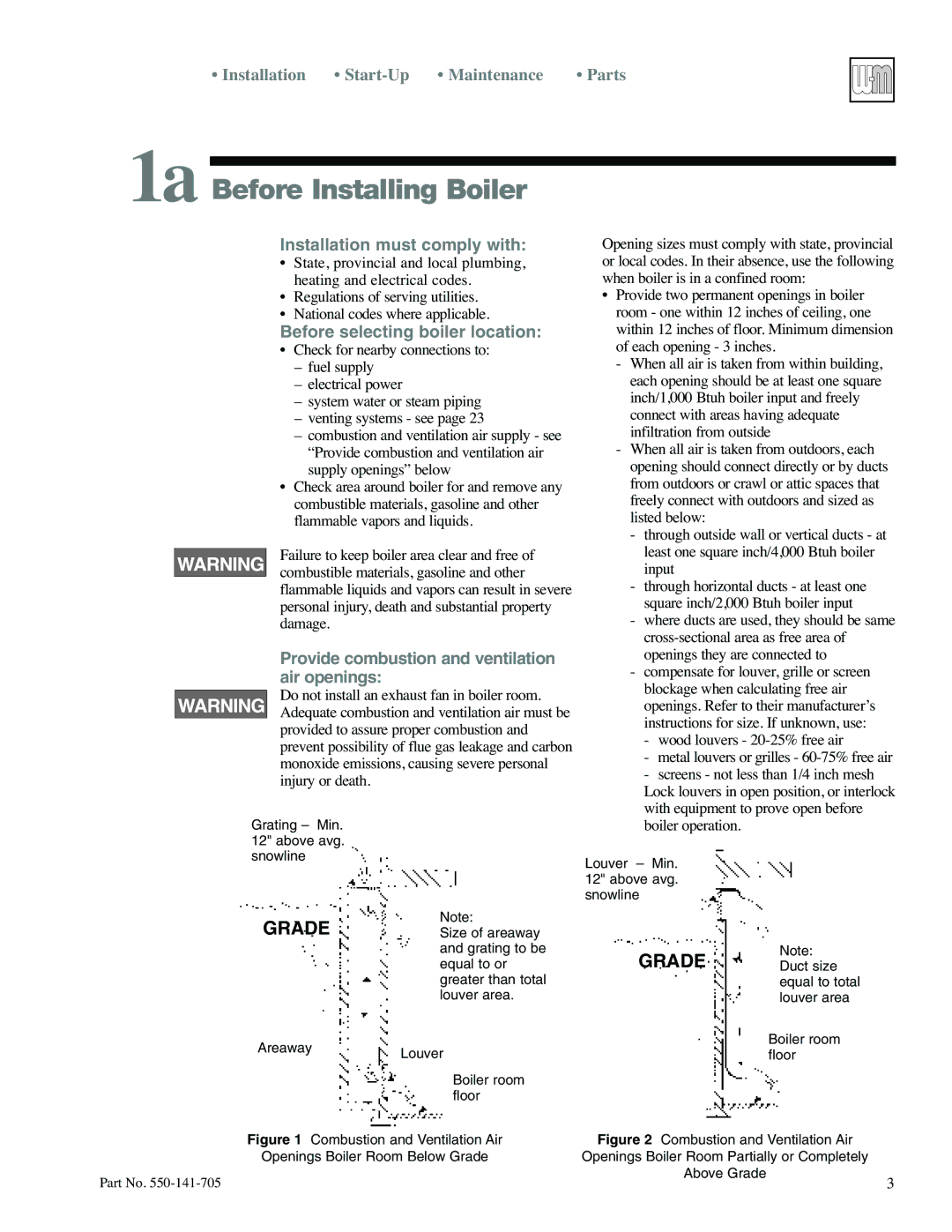78 specifications
The Weil-McLain 78 is a high-efficiency, versatile cast iron boiler that has been a staple in residential and commercial heating applications for decades. Renowned for its durability and performance, the boiler is designed to provide reliable heat while maintaining efficiency and minimizing energy consumption.One of the main features of the Weil-McLain 78 is its cast iron construction. This material is not only known for its longevity but also for its excellent heat retention properties. The cast iron sections allow for a slow, steady heat release, ensuring that spaces remain warm and comfortable. The boiler is built to withstand the rigors of everyday use, making it ideal for both home and business environments.
In terms of technology, the Weil-McLain 78 incorporates an advanced combustion system that optimizes fuel usage. This efficient burning process not only conserves energy but also contributes to lower utility bills for users. Moreover, the boiler is designed to work well with natural gas or propane, giving homeowners and businesses flexibility in fuel choices.
Another characteristic contributing to the Weil-McLain 78’s reputation is its efficiency ratings. With a rating of 83% AFUE (Annual Fuel Utilization Efficiency), this boiler stands out in its class. This efficiency not only reduces carbon emissions but also enhances overall operational effectiveness, allowing for significant energy savings over time.
The Weil-McLain 78 is also designed for ease of installation and maintenance. Its compact design allows it to fit in tighter spaces, and the accessibility of key components simplifies routine servicing. The unit comes with a multitude of options for controls and accessories, ensuring adaptability to various heating systems.
Furthermore, Weil-McLain places a strong emphasis on safety features. The 78 model incorporates multiple safety controls, including a temperature limit switch and an automatic shut-off system. These features help prevent overheating and provide peace of mind for users.
In conclusion, the Weil-McLain 78 combines robust construction, advanced technology, and efficiency, making it an excellent choice for various heating needs. Its reputation for reliability, comfort, and safety has positioned it as a leader in the boiler market for both residential and commercial applications. With the Weil-McLain 78, users can enjoy consistent warmth and comfort for years to come, backed by a trusted name in heating solutions.

